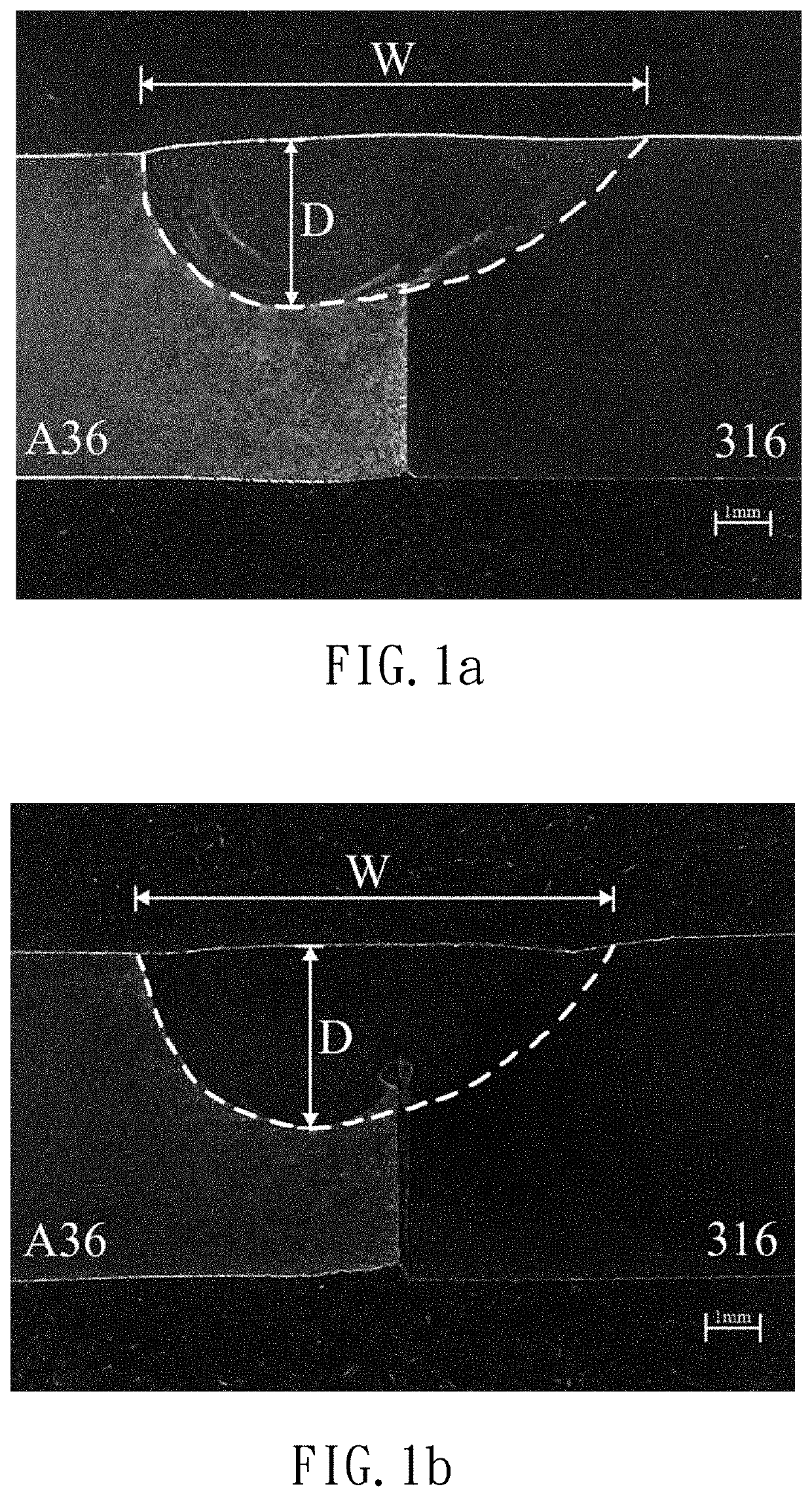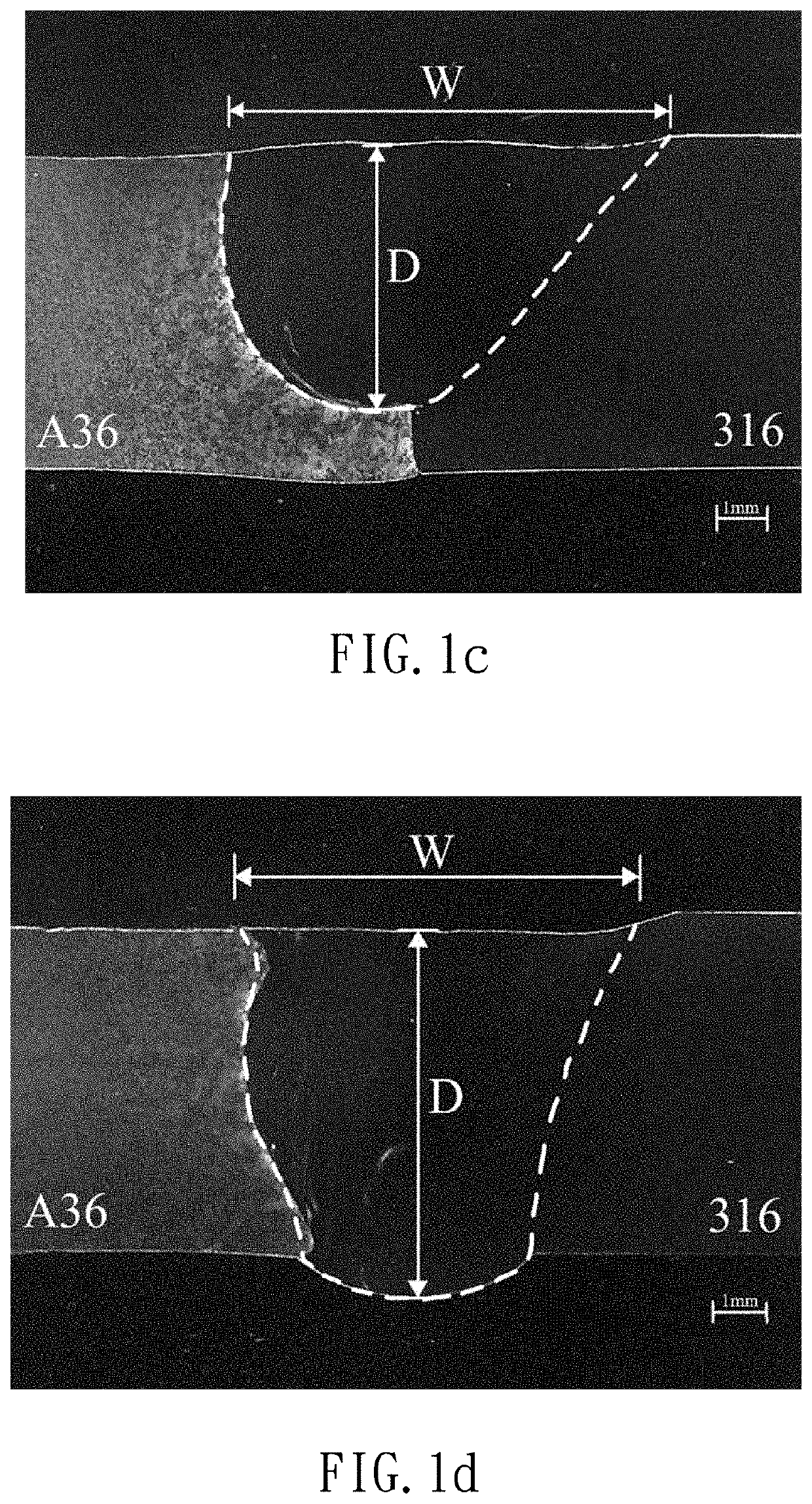TIG Welding Flux for Dissimilar Steels
a technology of dissimilar steels and fluxes, applied in the field of welding fluxes, can solve the problems of increasing welding time and manufacturing costs, and cannot be carried out on site, and achieve the effects of easy spread, easy melting, and great uniformity
- Summary
- Abstract
- Description
- Claims
- Application Information
AI Technical Summary
Benefits of technology
Problems solved by technology
Method used
Image
Examples
Embodiment Construction
[0017]A TIG welding flux for dissimilar steels according to a specific embodiment of the present invention that can be used with tungsten inert gas (TIG) welding procedure to join a stainless steel workpiece and a carbon steel workpiece.
[0018]Specifically, the stainless steel workpiece can be made of ASTM 316 stainless steel with chemical components shown in TABLE 1. The carbon steel workpiece can be made of ASTM A36 carbon steel with chemical components shown in TABLE 2. However, the stainless steel workpiece and the carbon steel workpiece can be made of by other known stainless steel and carbon steel, respectively, which can be appreciated by a person having ordinary skill in the art.
TABLE 1CSiMnPSNiCrMoFewt≤0.08≤0.75≤2≤0.045≤0.0310-1416-182-3Bal.%
TABLE 2CSiPSCuFewt %≤0.25≤0.40≤0.04≤0.05≥0.20Bal.
[0019]The TIG welding flux for dissimilar steels can include silicon dioxide (SiO2), cobalt (II, III) oxide (Co3O4), manganese (II, III) oxide (Mn3O4), nickel (III) oxide (Ni2O3), molybden...
PUM
| Property | Measurement | Unit |
|---|---|---|
| diameter | aaaaa | aaaaa |
| thickness | aaaaa | aaaaa |
| thickness | aaaaa | aaaaa |
Abstract
Description
Claims
Application Information
 Login to View More
Login to View More - R&D
- Intellectual Property
- Life Sciences
- Materials
- Tech Scout
- Unparalleled Data Quality
- Higher Quality Content
- 60% Fewer Hallucinations
Browse by: Latest US Patents, China's latest patents, Technical Efficacy Thesaurus, Application Domain, Technology Topic, Popular Technical Reports.
© 2025 PatSnap. All rights reserved.Legal|Privacy policy|Modern Slavery Act Transparency Statement|Sitemap|About US| Contact US: help@patsnap.com


